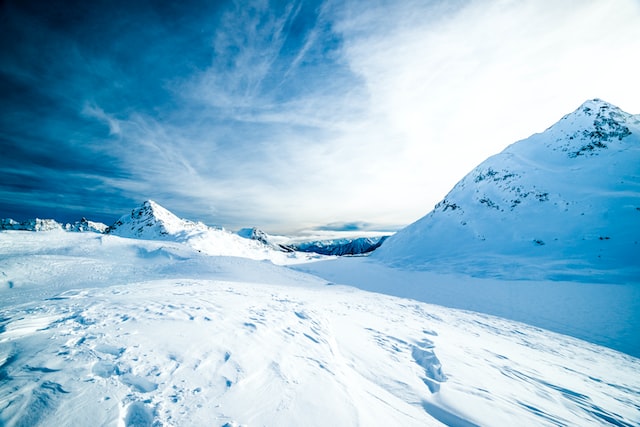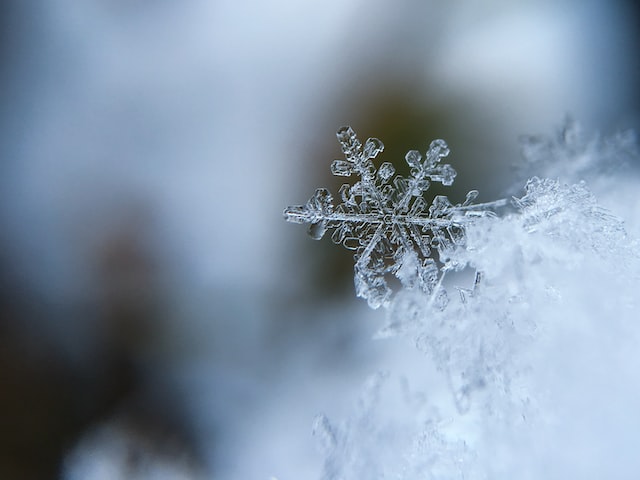Snow is a winter wonder of nature, bringing beauty and joy to many. It is one of the season’s most beautiful and magical elements, with its sparkly snowflakes and fluffy snow drifts. Snow can be a blessing and a curse. However, it can provide natural insulation and many fun winter activities and cause hazardous conditions and destruction.
Snow is made up of unique and intricate snowflakes, no two alike. They are typically six-sided crystals, and the size and shape of a snowflake depend on the temperature and humidity. Snowflakes form when water vapor in the atmosphere cools and condenses into tiny ice crystals. As these crystals fall, they collect more and more water vapor, growing larger and larger.
Snow provides natural insulation, keeping the ground and plants below warmer than they would be. It can also protect the soil from becoming too cold and killing the plant life beneath. It is why snow is so vital to the health of plants and animals during the winter months.
Snow can also provide a variety of fun activities for people to enjoy. Snow can be an exciting part of winter, from sledding and snowman building to skiing and snowboarding. Snow can also allow people to explore and discover the outdoors on foot or with a snowmobile.
Snow can have a significant impact on the environment and nature. Certain animals have adapted to living in cold, snowy climates, such as the arctic fox, ptarmigan, and snowshoe hare. Plants also have adapted to wintery conditions, such as evergreens that stay green throughout the winter and deciduous trees that lose their leaves and become dormant.
Unfortunately, snow can also bring destruction and disaster. Heavy snowfall can cause avalanches and blizzards, which can be dangerous and deadly. The weight of the snow can also cause roofs to collapse and trees to fall, leading to the destruction of property and, sometimes, even loss of life.
Contents
Benefits of Snow
- Physical Health: Snow provides an excellent opportunity to exercise and stay physically active during winter. Skiing, snowboarding, sledding, and snowshoeing are just a few winter sports that can help keep you in shape and provide a great way to get out and have fun.
- Mental Health: Snow can be a great mood booster, especially in colder climates where the sun isn’t out as much. Taking a snowy walk can help to reduce stress and depression while also bringing a sense of peace and tranquility.
- Aesthetic Beauty: Snow can turn any drab, dull landscape into a magical winter wonderland, creating a beautiful and calming atmosphere. The sight of freshly fallen snow is one of the most spectacular natural phenomena. It can provide an excellent opportunity for photography.
- Environmental Benefits: Snow can help protect plants and wildlife, providing insulation from the cold and helping keep the soil moist. In addition, snow can help to prevent soil erosion, as it acts as a barrier to protect the Earth from strong winds and heavy rain.
- Transition: Snow provides many benefits, from physical and mental health to aesthetic beauty and environmental protection. Whether you live in a cold climate or are just visiting for the holidays, taking advantage of snow’s benefits can help make this winter one to remember.
The Wonders of Snow
- White Magic: Snow is a magical white with a beauty all its own. Its softness and pureness mesmerize us as we watch it slowly drift down from the sky. It is like a blanket that covers the world in warmth and light.
- A blanket of Calm: Snow brings a certain calmness and peace. We can appreciate its beauty and presence as it blankets the ground in a soft, white layer. It can soften the world’s edges and help us relax and be in the moment.
- Winter Wonderland: The winter wonderland created by snow is something that most people will never forget. It is a beautiful sight to behold and a reminder of the power of nature. The snow creates a world of its own and allows us to marvel at the season’s beauty.
Pretty snowflakes
- Snowy Wonders: As the snowflakes slowly drift from the sky, they create a winter wonderland. Everywhere you look, white blankets the landscape, and no two snowflakes are alike. Even though the snow may seem uniform, each flake is unique, adding to the beauty of a snow-covered world.
- Incredible Variety: Snowflakes are not all the same; they come in various shapes and sizes. Each snowflake is a tiny masterpiece of intricate design crafted by nature’s creative hand. The variations are endless, from delicate, feathery shapes to intricate, lacy patterns.
- Stunning Beauty: His sight of freshly-fallen snow can be breathtaking. As the snowflakes settle, they create a sparkling white blanket that is truly beautiful. Watching the snowflakes dance in the wind, drifting lazily down from the sky, can be mesmerizing.
No matter how many snowflakes have come before, each one is a unique and lovely reminder of the beauty of winter.
Natural insulation
Snow is a natural insulation material. Its insulating properties stem from its ability to trap air between the snowflakes. This air is a poor conductor of heat, so snow can be used to insulate and keep warmth in. Snow can also be used as a form of reflective insulation, as it reflects the sun’s rays away from the surface it covers. It helps to keep the surface cooler and reduces heat gain.
Winter activities
. Skiing,
. Snowboarding
. Sledding
. Snowshoeing
. Ice skating
. Ice hockey
. Snowmobiling
. Building snowmen,
. Snow painting,
. Snow angels,
. Snowman bowling
. Snowball fights
. Snow forts
. Winter hiking
Snow’s Impact on Nature
Snow can have a significant impact on nature, both positive and negative.
- Positively, snow can act as an insulating blanket that helps to protect plants and animals from extreme weather conditions, such as cold temperatures. Snow can also provide an essential water source for plants, animals, and ecosystems as it melts and refreezes throughout the winter. Finally, snow can help spread the seeds of certain plants and create ideal habitats for some species.
- Negatively, snow can destroy specific habitats, as certain species cannot survive in cold and snowy conditions. Additionally, heavy snowfall can prevent animals from accessing food and water sources, leading to starvation and dehydration. Furthermore, snow can also bury or disrupt the natural vegetation in some areas, destroying the habitat and its resources.
Animal adaptations
Snow adaptations in animals include:
- Fur: Many animals, such as arctic foxes, polar bears, and Arctic hares, have thick fur coats that act as insulation and keep them warm in cold temperatures.
- Feet: Animals such as snowshoe hares and ptarmigans have giant feet that act as snowshoes, helping them move around on top of the snow.
- Fat: Animals such as penguins and seals have a layer of fat beneath their skin that helps keep them warm and insulated.
- Eyes: Animals with eyes adapted for snow have larger pupils and more reflective retinas, allowing them to see better in bright light conditions.
- Ears: Animals such as Arctic hares have ears that are small and covered in fur, which helps keep them warm and reduces the amount of snow that gets inside their ears.
- Migration: Many animals migrate to warmer climates during the winter to avoid the cold.
- Hibernation: Some animals, such as groundhogs, hibernate to conserve energy and survive the winter.
- Camouflage: Many animals have coats that match the snow, allowing them to blend in and stay hidden from predators.
- Behavioral Changes: Some animals, such as deer, modify their behavior in the winter, foraging for food during the day when it is warmer and resting during the night when it is colder.
- Reduced Activity: Animals such as bears reduce their activity level in the winter, conserving energy until spring arrives.
Plant adaptations
Plants in cold, snowy climates must withstand frigid temperatures, desiccation, and other environmental stresses.
Some adaptations that help them survive in such conditions include:
– Waxy coatings on their leaves and stems to reduce water loss from desiccation
– Long, deep root systems to reach water and nutrients beneath the snow
– Hairs on the leaves and stems to insulate them from the cold
– Increasing the number of antifreeze proteins in their cells to reduce the risk of freezing
– Growing shorter and closer to the ground for protection from strong winds
– Growing thicker and shorter branches so that snow does not accumulate on them
– Producing more carbohydrates that act as antifreeze in their cells
– Growing narrower leaves with a higher surface area to volume ratio to better retain heat
– Growing shorter and more compact buds to reduce the risk of damage from wind and ice
– Developing more winter hardiness, which increases their ability to tolerate cold temperatures and snow
– Producing more phenolic compounds to reduce damage from UV radiation.
These adaptations help plants survive the harsh winters of snowy climates.
Snow-related disasters
- Avalanches are large masses of snow, ice, and debris that can travel down mountainsides at high speeds. They can cause massive destruction to infrastructure, homes, and businesses and threaten the lives of people in their path.
- Ice storms: Ice storms occur when an area is hit with freezing rain and sleet over an extended period. It can cause widespread power outages and damage trees, buildings, and other structures.
- Blizzard: Blizzards are characterized by strong winds, snowfall, and cold temperatures lasting for several days. Blizzards can disrupt transportation, communication, power, and other services. They can also cause hazardous driving conditions and make it difficult to carry out necessary activities.
- Snowstorms are characterized by heavy snowfall over several hours or days. They can cause disruptions to transportation and communication, as well as property damage.
- Flooding: Heavy snowfall can cause flooding when it melts. It can damage homes, buildings, and infrastructure and cause severe disruptions to transportation and communication.
- Mudslides: Mudslides are caused when a large amount of melting snow causes the soil to become unstable and slide down a slope. They can destroy structures and can endanger lives.
- Extreme cold: Extreme cold temperatures can cause frostbite, hypothermia, and other life-threatening conditions. It can also damage infrastructure and cause power outages.
- Wildfires: Heavy snowfall can create dry conditions that can lead to wildfires. These fires can cause massive destruction to homes, businesses, and other structures.
- Ski accidents: Skiing and snowboarding can be dangerous activities, as extreme weather conditions and icy slopes can cause serious accidents.
- Roof collapses: Heavy snow can put a lot of pressure on roofs, causing them to collapse. It can cause severe damage to homes and businesses and put the lives of those inside at risk.

Top 10 snow traveler center
- Ski.com – https://www.ski.com/
- Snow.com – https://www.snow.com/
- Vail Resorts – https://www.vail.com/
- Ski Utah – https://skiutah.com/
- Snowshoe Mountain Resort – https://www.snowshoemtn.com/
- Ski New Hampshire – https://www.skiNH.com/
- Ski Vermont – https://skivermont.com/
- Ski California – https://www.skicalifornia.org/
- Mammoth Mountain – https://www.mammothmountain.com/
- Squaw Valley – https://www.squawalpine.com/
Summary of snow’s impact
Snow can have a significant impact on the environment. It can affect the temperature, cause floods, and disrupt transportation systems. Snow can also affect the amount of water available for plants and animals and can reduce the amount of solar radiation that reaches the Earth’s surface. Snow can also affect the spread of disease and increase the risk of avalanches and landslides. Finally, snow can cause significant economic disruption, leading to losses in production and consumption.
Final thoughts snow
Snow is a beautiful and magical part of nature that can bring us joy and create a unique atmosphere. It is a great way to get outdoors and enjoy winter activities such as skiing, snowshoeing, or building a snowman! Whether you’re a kid or an adult, snow can bring out the childlike wonder and excitement in all of us!
Conclusion
Snow white and the seven dwarfs is a classic fairy tale that generations have enjoyed. It has a timeless message of good conquering evil and the importance of friendship and loyalty. This story is a beautiful example of the power of imagination and how it can bring joy and happiness to people of all ages. Snow White and the Seven Dwarfs is a beloved story that will continue to bring happiness to those who experience it.







